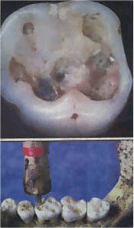Study Tips From DannyDanny先生のStudy Tips
40Writing Summaries for Lower Level Students

I have a question for you: Which type of writing is the most common at NIC? Paragraphs? Essays? Research papers? No, none of these answers are correct. The answer is gsummariesh.
You will write at least 2 summaries every week at NIC. In some cases, you will write more than that. They are an important part of the RWD journals that we do here at NIC every week.
In the April 1st issue of 2005, I wrote an article about how to write a summary. However, I later realized that this is still very difficult to do for lower students. Therefore, I created a new article for lower students to learn how to write summaries. Some students here at NIC have read it and said that it worked well for them. So I decided to put this on the website as a study tip.
So pay attention to this important idea.
Writing a Summary Involved 4 steps:
-
Read the article and highlight the main points
When you read, think about: who, what, when, where & why
-
Answer the wh- questions
Look back at the highlighted parts and answer the wh- questions below on a piece of paper. You can look at the article to do this, but write it in your own words!
@
Who is the article about?
Who can mean: a person/people, a company, a group, a country, an animal etc. The who might involve two different groups of people, as well.When & where did the events take place?
This is important to tell the reader. The reader should know where the events took place and also know approximately when the events happened, as well. More than one date & place might be mentioned in the article.What happened?
Of course this is very important. What are the main points of the articles? What events happened? This is usually written in more than one sentence of the summary.Why did it happen?/What is the importance?
This gives the reader a better understanding of the events. Why something happened or why it is important is just as necessary as what happened.Remember that just replacing new words from the article with new words is not how you write in your own words.
-
Write the summary
Now put the article away. Next, use the information from Step 2 to write your summary. Be sure to do this in your own words and do not look back at the article. Do not include quotations or unimportant information.
-
Check the article and your summary
Now, go back and reread the article and read your summary. Compare them. Check to make sure that:
- both have the same main points
- both have the same general ordering of events
- none of the text is copied exactly as the original article (it is OK to copy names, places, and important terms)
-
Check your writing
Look for spelling mistakes, subject verb agreement, article usage, prepositions and any unclear sentences. Remember, the summary has to have good writing!
News for You, a great newspaper that we get every week at NIC, has a June 7th article entitled Drilled Teeth Tell Taleh. Take a look at how this student went through steps 1-3 to write a good summary...
-
Check out how the student highlighted the main points (wh- questions) of the article
Drilled Teeth Tell Tale
Dentists Have Long History

Researchers found very old skulls that had holes from dental drills. The skulls were found in Pakistan. They date back to between 5500 B.C. and 7000 B.C.
The skulls prove that dental work is an ancient art. Itfs at least 4,000 years older than experts had thought. The news appeared in a recent issue of the science journal Nature.Researchers found at least nine skulls. The teeth had 11 nearly perfect drill holes. The holes were drilled into hard-to-reach back teeth. Some holes measured one-seventh of an inch deep.
The holes were so perfect, so nice. I showed the pictures to my dentist, he said one expert. gHe thought they were amazing holes.
Researchers found drill tips at the site. The tips were made of flint, which is a kind of stone.
Researchers think dentists used small bows to drill. The bows drove the flint into patientsf teeth.
Experts think the practice evolved from a method for drilling beads. But the dental work was done for health reasons, the experts believe. Four drilled teeth showed signs of decay. No fillings were found. But they might have existed.
Experts say the ancient drilling rivals modern dental work. But ancient dentists did not have drugs to dull pain. Dental patients 9,000 years ago must have suffered a great deal. -
(Here the student answered the wh- questions)
@
Who?
Researchers (reported in Nature)
Ancient peopleWhen & where did it take place?
The research is recent.
Happened 9,000 years ago.
It was found in Pakistan.What happened?
Nature (a science journal) researchers found 9 skulls with holes in the teeth
The holes were drilled
The holes were in the back teeth@
Flint drill pieces were also found
The holes were done very well
Like holes made by dentists today
They believe ancient people made these holes in teeth like dentists do todayWhy did it happen?/What is the importance of the events?
Researchers did not know this began this long ago
They thought it began 5,000 years ago -
(Now the student wrote the summary and checked her sentences for mistakes)
Summary
Recently researchers found out that dentists lived a long time ago. Nature,a science journal, writes that they found 9 skulls in Pakistan that are 9,000 years old. They have holes drilled into the back teeth. The holes were done very well. Drill pieces made of flint were also found. Researchers think that ancient people used these drills like dentists use them now. In fact, the holes were drilled just as good as dentist work today. This is important for researchers because they thought dentist work started about 5,000 years ago.
Now, the student has written a fairly good summary. Good luck writing your own summaries!